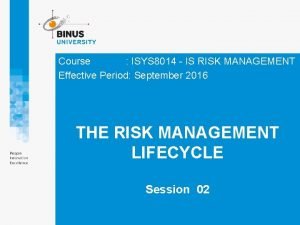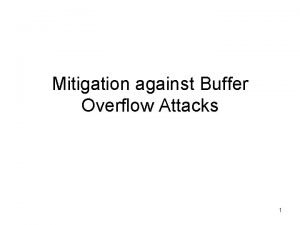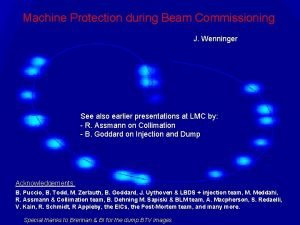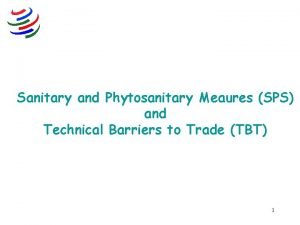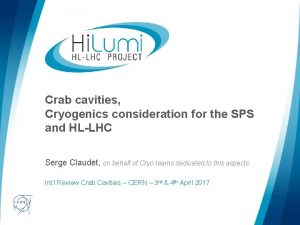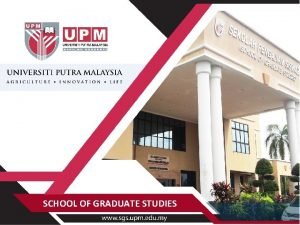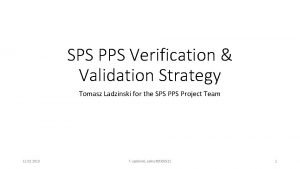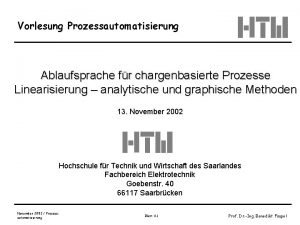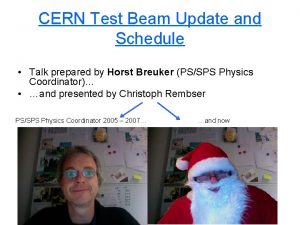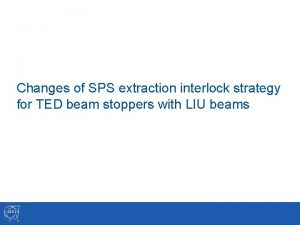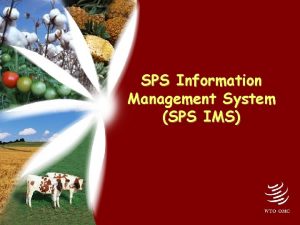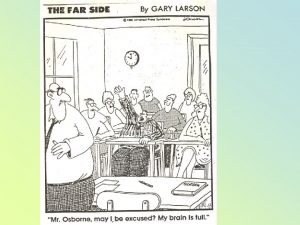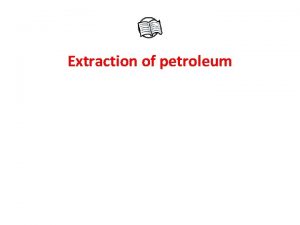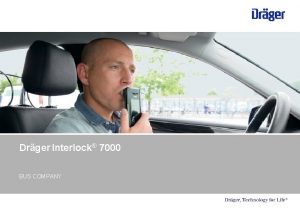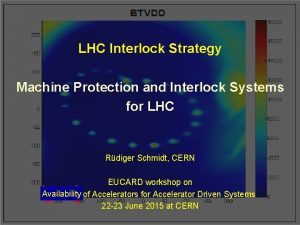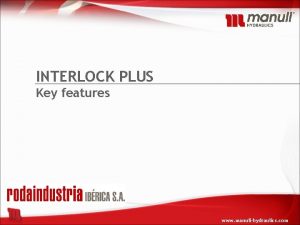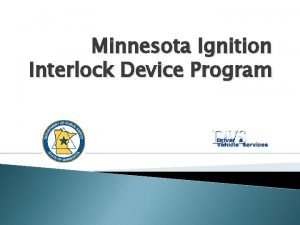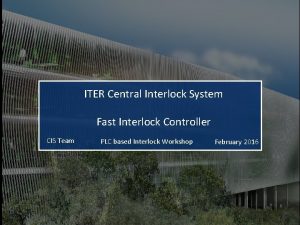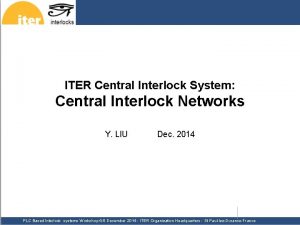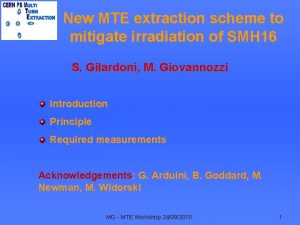Interlock modification of SPS extraction interlock to mitigate












- Slides: 12

Interlock modification of SPS extraction interlock to mitigate TED limitation for LIU/HL beams V. Kain SPS-OP

Introduction (1) o TED: transfer line beam stopper • Designed to absorb ultimate beam • In air 4. 3 m TED connected to Y-chamber. Can be moved into beam. Graphite (R 7500) o Cu-Be Cu-OFE Insert (C 17200) Al (6082 T 6) Two TEDs per 3 km LHC transfer line. • One shortly after the SPS extraction point. One close to the LHC injection point. 1

Introduction (2) o With the TEDs, part of the line can be studied without the downstream equipment necessarily available Extraction kicker Injection kicker o Interlocking philosophy: If a TED is in beam the interlocks of the downstream equipment are ignored. o If TEDs are moving, extraction is never permitted. Only if in or out o This is true for any intensity to be extracted from the SPS 2

TED with LIU beams o The current TED design cannot withstand more than 144 LIU intensity bunches. • Graphite goes beyond stress limits o Proposal: • Keep current design • Limit intensity to max. 144 LIU bunches to be extracted from the SPS with TEDs in the line 3

Result from Simulations R. Esposito Simulations also done for continuous extractions over 30 minutes 4

Functional specification for interlocking sent for approval o Comments received. o In the process of implementing comments… 2/5/2022 5

Implications for TED as EIS o The TEDs are EIS for the SPS and LHC • TT 40 SPS chain 2, TT 60 TED SPS chain 4, • TEDs TI 2 and TI 8 LHC safety chain o TBSEs are same design as TEDs • TBSE TI 8 SPS chain 3 • TBSE TI 2 SPS chain 5 6

Implications for TED as EIS Safety file: LIU SPS Safety-Package: SPS Ring and Transfer Lines SPS-L-SF-0006 Quote: o The robustness limitation with LIU beams does not reduce the safety provided by the TED/TBSEs for personnel, as even in the event of cracking of the core the beam is stopped by the device. No catastrophic failure is expected even in case of impact of 288 bunches. Scenarios 1: o Intrusion into LHC zone 8 while filling high intensity beam • • • LHC access chain and SPS chain 3 open LHC injection EIS interlocked - no beam can be injected into LHC TI 8 EIS interlocked - no beam can be transmitted to downstream part of TI 8 TED. 87765 (EIS) automatically moves to “IN BEAM” position (slow movement ~60 seconds) TBSE in TI 8 automatically moves to “IN BEAM” position (slow movement ~60 seconds) SPS LSS 4 extraction inhibited by BIS system (via non-maskable inputs TED/TBSE moving, TI 8 downstream, LHC beam permit, LHC injection BIC, …) - no beam can be extracted from SPS LSS 4 7

Implications for TED as EIS Scenario 2: o Intrusion into another LHC access zone while filling high intensity beam • LHC access chain open • LHC EIS interlocked - no beam can be injected into LHC • TED. 87765 (EIS) automatically moves to “IN BEAM” position (slow movement ~60 seconds) • SPS LSS 4 extraction inhibited by BIS system (via non-maskable inputs TED/TBSE moving, LHC beam permit, LHC injection BIC, …) - no beam can be extracted from SPS LSS 4 For the other uses cases, see safety file 8

Implications for TED as EIS Conclusion in safety file: For all use cases, the fast EIS (power converters and extraction kickers) as well as the extraction interlock system always ensure that no beam above 144 × 2. 32 × 1011 protons will impact the slowly moving TEDs/TBSEs even in case of an access system intrusion interlock. No modification of the TED and TBSE behaviour for the access system is therefore required. Any comments from the DSOs? 9

Extra slides Evian workshop 2016 10

Proposed interlocking implementation o New Safe Machine Parameter Flag in the SPS: SPS TED BEAM FLAG A and B • o SPS_TBF The new flag is taken into account in the user permit on the beam interlock controller of the TEDs, where it is checked whether it is moving or not. • The logic will be completed to take into account the SPS_TBF as follows: User Permit = TRUE when ( (TED_IN SPS_TBF=TRUE) TED_OUT ) else User Permit = FALSE o The affected Beam Interlock Controllers - input 1 of the slave BIC TT 60 B (in BA 6) for Extraction 1 - input 1 of the slave BIC TT 40 B (in BA 4) for Extraction 2 - input 1 of the slave BIC TI 2 D (in SR 2) for Extraction 1 - input 1 of the slave BIC TI 8 D (in SR 8) for Extraction 2 11
